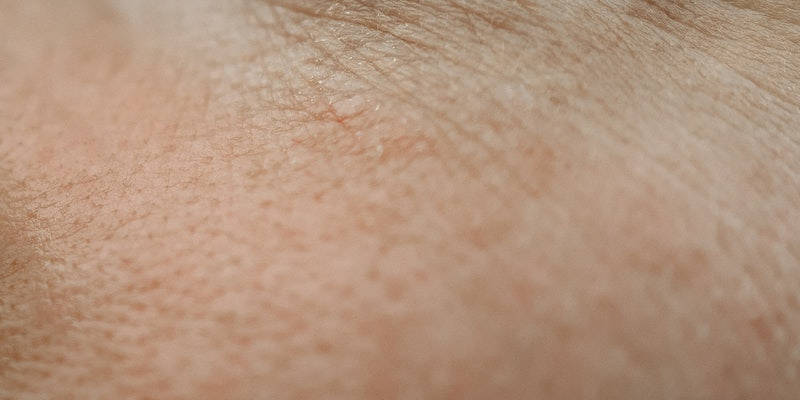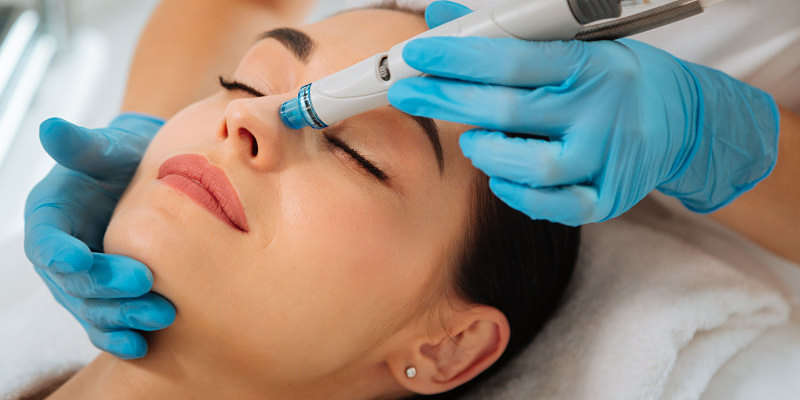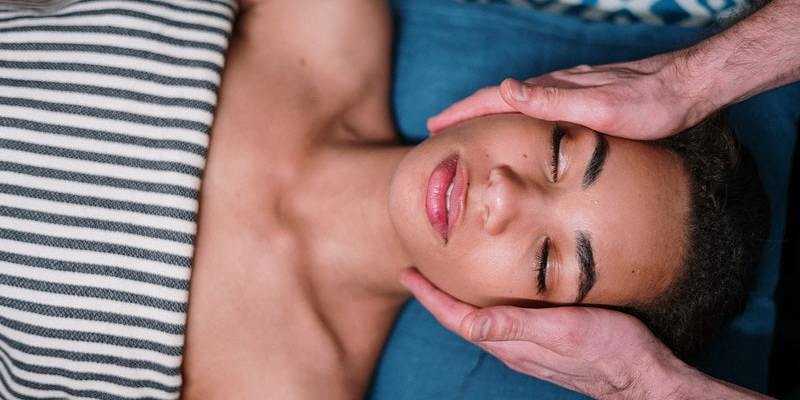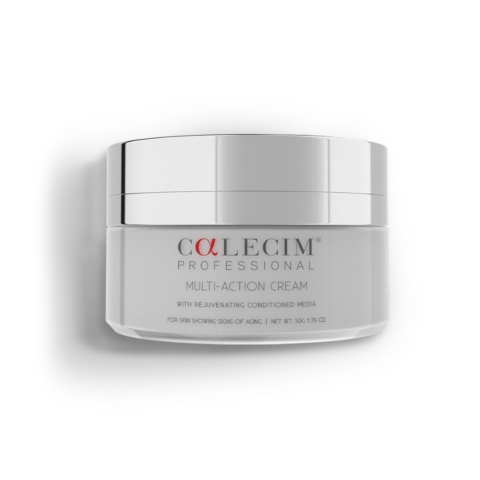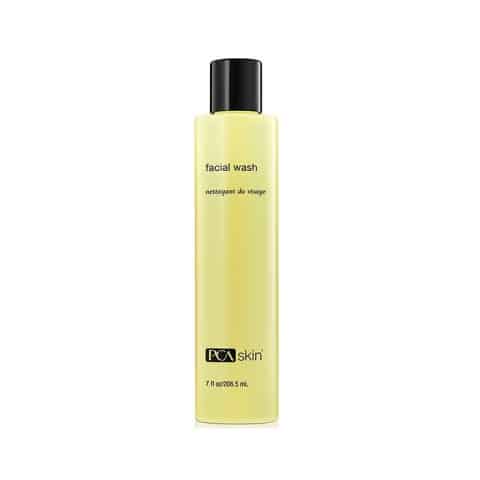What Is a HydraFacial?
The patented skin treatment HydraFacial is often also referred to as a hydradermabrasion facial, and a hydra therapy facial.
It is a type of crystal free microdermabrasion. This non-invasive skin care treatment buffs away the stratum corneum ( the top layer of the skin). The HydraFacial is a type of face exfoliator and acts to remove dead skin cells.
Rather than blasting the skin with fine crystals, like traditional dermabrasion, the HydraFacial takes a gentler approach using a vacuum to unclog pores. It also simultaneously pushes in potent actives.
It’s currently used to treat a range of skincare concerns including enlarged pores, clogged pores, wrinkles and breakouts. HydraFacials reportedly smooth skin and improve overall skin tone, as well as appearance.
HydraFacials have also been reported to provide instant and more dramatic results when compared to other facial treatments. This is due to the use of a combination of different extraction techniques.
As one of the most popular facial trends in the modern world, HydraFacial's popularity is still growing. Throughout this blog, we'll dive into why they're being praised, as well as the perceived benefits. We'll also explore what experts are saying about the treatment. Most importantly we'll answer whether the HydraFacial is dermoi approved.
How Does a HydraFacial Work?
The facial treatment involves using a patented device to deliver exfoliation, cleansing, extraction, and hydration.
There are 2 types of exfoliation at work with the HydraFacial. The first comes from hydradermabrasion and this uses an abrading tip. The second comes from liquid being blasted onto the skin.
HydraFacial Steps
What Does the HydraFacial do?
HydraFacials are less abrasive than other forms of microdermabrasion, as well as being less invasive than traditional facials. These include chemical peels or laser resurfacing, which often leave skin irritated for days.
It's often difficult for serums to pass through our initial skin barrier when applied manually. Using hydrodermabrasion methods to apply serums can increase the penetration of skincare solutions.
When compared to other peeling techniques, hydradermabrasion comes with a reduced chance of complications and less chance of any skin bleeding. A HydraFacial treatment also doesn't require any local anaesthesia.
There’s also no downtime to HydraFacials. Other more invasive treatments leave skin red and irritated for days.
Unlike in standard microdermabrasion treatment, HydraFacials don’t use crystals to erode the skin’s barrier. As it's crystal free, there aren't health risks associated with the chemical crystals.
Before and After HydraFacial
No special preparation is required for the procedure. People can use the same skincare products as they used to. There is no need to use extra products.
Keep doing your daily skincare routine both before and after the procedure. Make sure to cleanse, tone, and hydrate cells in the morning and evening.
Negative Side Effects of HydraFacial
Typically, the HydraFacial procedure does not cause complaints in patients. Yet, after the procedure, minor side effects are possible. Patients complain about skin dryness, a feeling of tightness, and slight fragmentary peeling. However, it should be taken into account that the HydraFacial technology has a quick effect: the skin calms down very quickly, being saturated with moisturizing and regenerating serums.
HydraFacial Pros and Cons
Unlike classical skin cleansing, the technique has the following features:
- removal of dead cells;
- stimulation using vacuum;
- saturation of the skin with special compounds.
During each session, the skin is cleansed and the sebaceous ducts are unclogged. Serums are introduced into the tissues, which penetrate deeply and work effectively thanks to high-quality peeling. The main thing is that procedures are carried out without piercing the dermis with needles. Thus, there is no swelling, bruising, or pain, and, therefore, no recovery period is required. The skin immediately looks rejuvenated, toned, and well-groomed.
Other benefits include:
- Minimum contraindications and side effects. The session is painless and comfortable.
- Personalized approach to each client. The cosmetologist chooses the most effective combination of serums with a therapeutic and care composition, based on the condition of the skin, its problems, and its needs.
- The visible effect is noticeable after the first session: the pores are delicately cleansed, the skin is deeply moisturized, and fine wrinkles are smoothed out.
- HydraFacial is a versatile procedure. There is no seasonality, or the period of preparation and rehabilitation.
- This technology is suitable for people of all ages. Skin type doesn’t matter either.
- HydraFacial is a multifunctional procedure. It can be used as a basic monthly treatment or to treat problematic skin.
- The procedure is suitable not only for the face but also for the body. You can apply therapeutic serum to any area with inflammation.
- It is permissible to combine HydraFacial with other diverse cosmetic techniques.
- Delicate effect on the skin. After the procedure, you can immediately attend various public events. The face will look great.
The procedure gives lasting results for the skin of patients of any age and gender and has virtually no side effects. Sensitive skin can react to the procedure with rosacea or rash. Breakouts are a common case after this procedure since the technology brings out all impurities. Also, it is contraindicated in the following cases:
- acne disease in severe form;
- skin damage or allergy;
- somatic diseases;
- purulent eruptions on the skin;
- herpes in the period of exacerbation;
- pregnancy and the period of breastfeeding.
HydraFacial Clinical Studies
One study investigated the perceived benefits of hydradermabrasion with antioxidant rich serums.
The study aimed to determine whether hydradermabrasion could boost antioxidant levels in the skin. It tested 2 groups: group A had the serum applied using hydradermabrasion delivery methods. Group B on the other hand, had the same polyphenolic antioxidant serum applied manually.
Group A results showed:
- Increased antioxidant levels
- Greater decreases in signs of skin aging
- Reduction of fine lines
- Reaction of pore size
- Decreased hyperpigmentation
- Boosted collagen production
- Increased epidermal thickness
- Increased papillary dermal thickness
In group B, applying the serum manually made no difference to the skin’s condition.
A clinical test determined the effects of physically applying acids on skin pores and comedones during hydradermabrasion. Clogged hair follicles in the skin are what we call comedones.
The study found that during treatment whiteheads and blackheads significantly decreased when tested 1, 2 and 4 weeks after the procedure.
While this appears to be good news, the study didn't test on sensitive skin. Due to the abrasive nature of both the exfoliation, and skin peel, we wouldn’t recommend this procedure being carried out on sensitive skin.
Hydrafacial Aftercare
Although no special products are required, the following ones will help improve the effect and boost ingredient absorption:
- Osmosis Repair Epidermal Repair Serum is a high-effective treatment for daily skincare. It causes a powerful action, charging cells with active ingredients that penetrate cells deeply. It calms redness, boosts skin repair and rejuvenation functions, and neutralizes inflammation. The product is suitable for all skin types.
- PCA Skin Facial Wash is an effective treatment that removes all sorts of impurities from the skin surface. The cleanser has a rich blend of natural extracts and ingredients that clean pores, exfoliate dead cells, and dissolve environmental dirt and other debris. The product prepares the skin surface for further care.
- Calecim Multi-action Cream is a deep-action treatment for all skin types. It moisturizes and nourishes cells, boosting cellular processes and skin regeneration. The cream has a rich composition that restores the protective barrier and improves skin complexion. Regular use of the moisturizer helps fight skin discoloration and sagging.
What Experts Are Saying About HydraFacials
Gretchen Frieling, MD, board certified dermatopathologist in Wellesley, Massachusetts recommends avoiding receiving a HydraFacial treatment if you have an active rash, sunburn, or rosacea.
She also suggested pregnant women avoid the treatment.
Are HydraFacials Dermoi Approved?
HydraFacials use hydradermabrasion. While there's some evidence that hydradermabrasion can increase skin rejuvenation, and it is also milder than traditional microdermabrasion, hydradermabrasion is still an abrasive method that will compromise the skin barrier.
Hydradermabrasion combines chemical peeling and extraction. The treatment also includes multiple passes, so you’re not doing this just once you’re doing it 4 times. As a result of the multiple passes, there is extreme potential to leave people red, raw, and sensitive.
Due to the potential irritation caused we would NOT advise you have the treatment if you have sensitive, acne-prone, or rosacea skin types as this may make conditions worse.
For these reasons, HydraFacials are NOT dermoi.
- Eve Casha, Dermoi's Chief Scientific Officer
The Risks of Having a HydraFacial Treatment
HydraFacial side effects in the short-term include an immediate skin breakout. Many skin experts refer to this as 'purging'. This occurs as impurities in the deeper layers of your skin rise to the surface due to the treatment. The temporary breakouts often cause spots and whiteheads to appear across the face. This is something to note, if you wish to receive treatment prior to an event.
Furthermore, due to them being relatively new to the skincare scene, HydraFacial side effects in the long-term have yet to be determined. Resultantly, increasing worry is spreading among leading dermatologists.
Furthermore, thanks to their 'instant' skin rejuvenating effects many people are becoming hooked on the treatments, prompting many to undergo the treatments regularly. The amount of people having HydraFacials often once a week or more has skyrocketed in recent years, giving rise to seriously worrying adverse effects.
Many people who received a hydra therapy facial reported being left with broken veins, uneven skin, dark pigmentation spots and even acne, following regular treatment. Model Sophie Anderton also reported skin thinning following her use of salon beauty treatments.
Sophie was left with paper-thin skin which meant that when she exposed herself to the sun afterwards, she developed dark brown blotches all over her face. It took months of intensive treatment with specialist creams to get her skin back to normal.
- Andria Vassiliou, Founder of Cetuem Skincare
Is a HydraFacial Worth It?
HydraFacials cost on average between £150 and £250 in the UK. Is a HydraFacial worth the money? Our advise is no!
As we listed above, the short term effects of HydraFacial treatments can be very damaging. What's more, the perceived 'smoothing and hydrating' benefits only last for around 5-7 days.
In terms of the long-term effects, there is no evidence to suggest that they improve skin health. On the contrary, research and scientific guidance suggests that they may in fact cause permanent damage to the skin in the long term.
To summarise, we wouldn't recommend receiving a HydraFacial treatment. While there's some perceivable benefits, the risks go hand-in-hand. Furthermore, potential long-term effects of HydraFacials include skin thinning, uneven skin pigmentation and age spots.
Sensitive skin types, as well as those who have acne-prone skin should certainly avoid the treatment due to its potentially irritating nature.
F.A.Q
Hydrafacial ruined my skin.
Some people may face individual intolerance to some ingredients used in serums. In such cases, an allergic reaction is possible. Yet, a skilled cosmetologist always consults a patient before the procedure to find out information about possible reactions to active components.
Skin looks worse after hydrafacial.
All skin impurities are brought out during the procedure. Thus, breakouts and rash are quite common cases. Skin worsening disappears in a few days.
Does hydrafacial work?
Hydrafacial is modern technology that gives a visible effect after the first session. The procedure is very popular and in demand due to the fact that the result is fast and visible even after one application.
Dry skin after hydrafacial, is it good?
Skin dryness comes as one of the common side effects. Yet, it is quickly eliminated. Side effects are minor and cease within a few hours after the procedure.
How often should you get a hydrafacial?
The number of required procedures and their frequency vary. Normally, cosmetologists recommend applying the procedure once per two weeks. Yet, this condition is applicable provided that your skin condition is normal. If you have some skin problems, you should do it more frequently.
How long does a hydrafacial last?
The procedure takes an average of 30-40 minutes.
